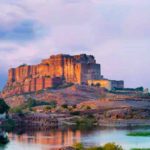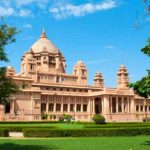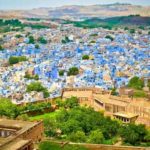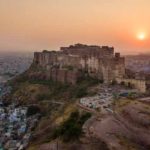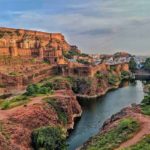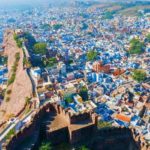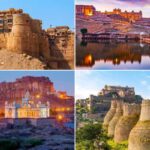Jodhpur, the second largest city in Rajasthan is popularly known as the Blue City. The name is clearly befitting as most of the architecture – forts, palaces, temples, havelis and even houses are built in vivid shades of blue. The strapping forts that tower this magnificent city sum up to a spectacle you would not want to miss. The mammoth, imposing fortress of Mehrangarh has a landscape dominating a rocky ridge with the eight gates leading out of the fortress. The new city is located outside the structure. Jodhpur is also known for the rare breed of horses known as Marwari or Malani, which are only found here. Jodhpur marks its origin back to the year of 1459 AD. The history of this prosperous city revolves around the Rathore clan. Rao Jodha, the chief of Rathore Clan is credited with the origin of Jodhpur in India. The city is known to be built in place of the ancient capital, Mandore of the state of Manwar. Hence, the people of Jodhpur and surrounding areas are commonly known as Marwaris. Also, it is believed that the relics of Mandore can still be witnessed in the Mandore Gardens.
Rising perpendicular and impregnable from a hill which is 125 metres above Jodhpur’s skyline is the Mehrangarh Fort. This historic fort is one of the most famous in India and is packed with history and legends. Mehrangarh Fort still bears the imprints of cannonball attacks courtesy the armies of Jaipur on its second gate. Chiselled and sturdy, the fort is known for its exquisite latticed windows, carved panels, intricately decorated windows and walls of Moti Mahal, Phool Mahal and Sheesh Mahal.
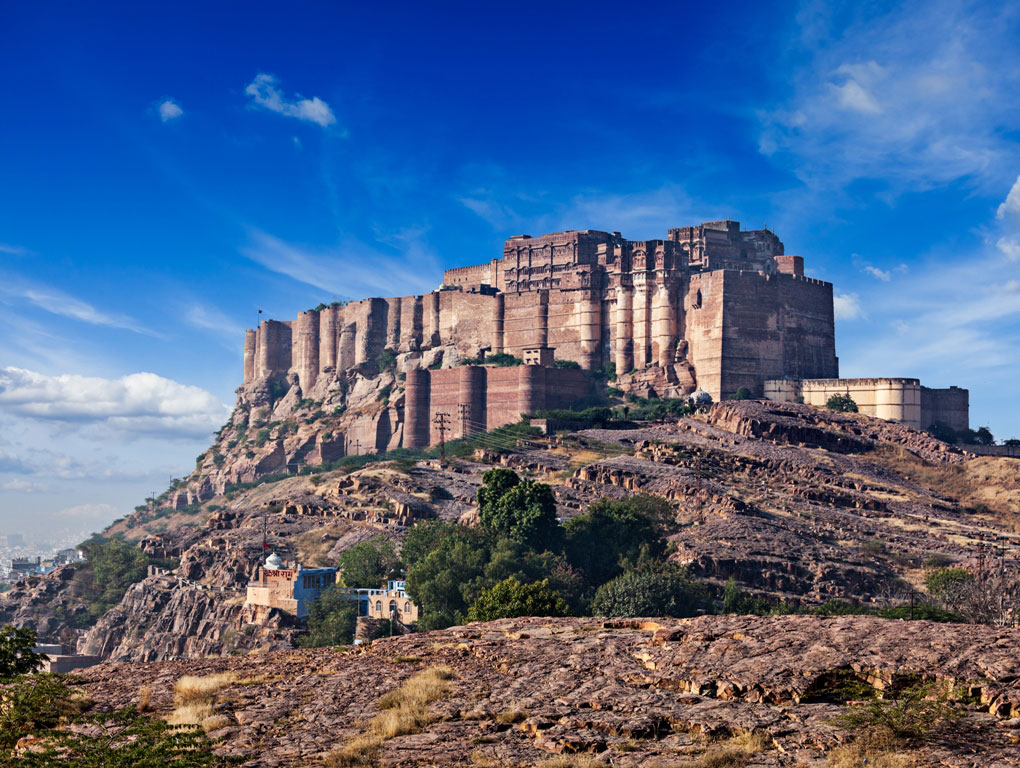
Umaid Bhawan Palace was built by Maharaja Umaid Singh in 1929 to counter a famine which had hit the state at the time. It was also known as the Chittar Palace while being constructed thanks to the use of stones drawn from the Chittar hill. The palace was designed by HV Lanchester, a renowned British architect, and was completed in 16 years. Built with sandstone and marble, the architecture of the palace is described as a blend of lndo-Saracenic, Classical Revival and Western Art Deco styles. It is recognised as one of the largest private homes in the world and also one of the more spectacular buildings. It is the only palace built in the 20th century.
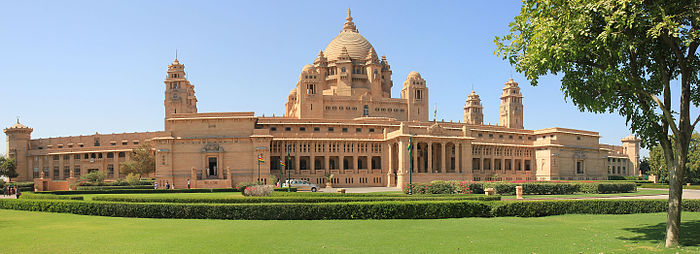
This milky white memorial built towards the end of the 19th century as a tribute to the leader Jaswant Singh is a huge tourist attraction. Jaswant Singh, who ruled Jodhpur, invested well in his state. He made attempts to bring down the level of crime, subdue dacoits, built railways and broadly worked on raising the economy of Marwar.
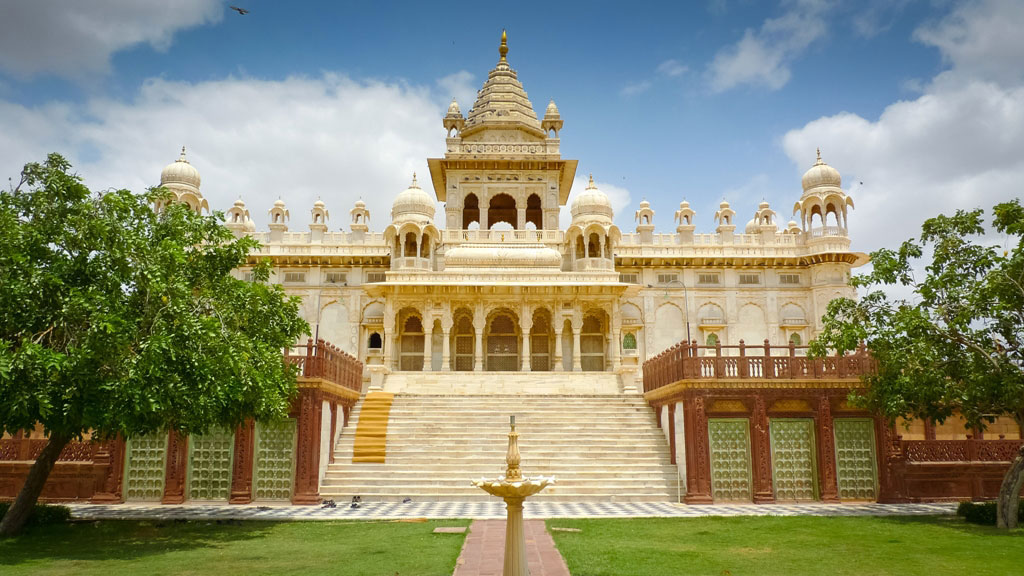
Mandore was the former capital of the formidable Marwar kingdom. At Mandore Gardens, you will find the brooding cenotaphs of Jodhpur’s former rulers. The beautiful cenotaphs at Mandore Gardens are set amidst the rolling greenery of a well landscaped rock garden. There is a hall of heroes, dedicated to various deities and Rajput heroes from popular folklore, whose statues are carved out of rock and painted in bright colours. As you climb up the hill, you will come across the relics of Mandore, including its old palace. The queens cenotaphs stand still on a rocky outcrop and are a ten-minute walk over the hill. This attraction is visited by thousands of visitors every month and it is definitely a haven for photographers with a love for historical design.
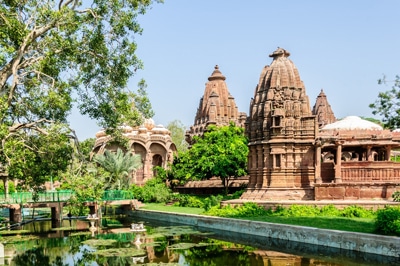
Balsamand Lake is about 5 kilometres from Jodhpur on the Jodhpur-Mandore Road. Built in 1159 AD, it was planned as a water reservoir to cater to Mandore. The Balsamand Lake Palace was built on its shore later as a summer palace. It is surrounded by lush green gardens that house groves of trees such as mango, papaya, pomegranate, guava and plum. Animals and birds like the jackal and peacock also call this place home. This lake is now a popular picnic spot with tourists and locals.
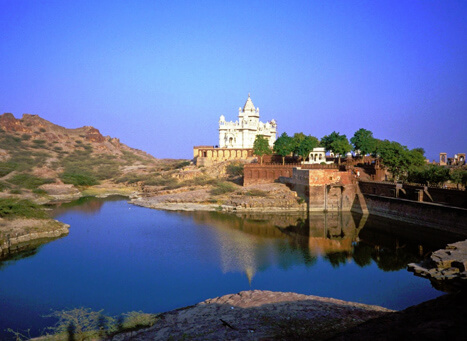
The government museum, located in Umaid Garden, houses a rich collection of relics including armoury, textiles, local art and crafts, miniature paintings, portraits of rulers, manuscripts and images of the Jain Tirthankaras. Wildlife lovers can also visit the zoo, which is located close by.
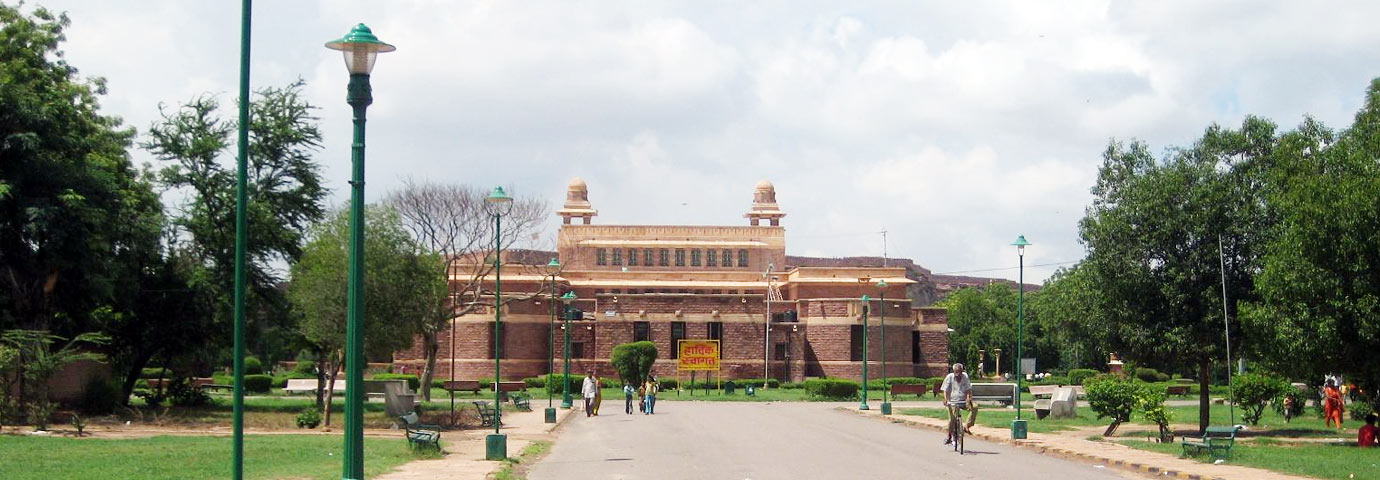
Jodhpur tour with Bishnoi village

